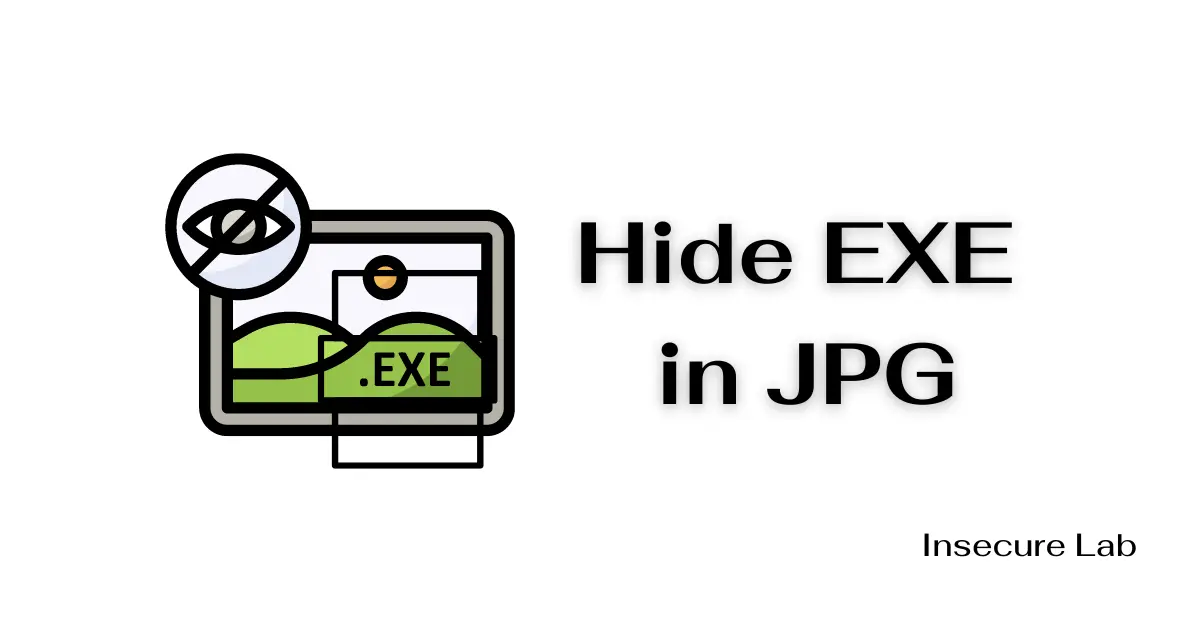🔍 Search
📥 Subscribe
Hide EXE in JPG with CMD
In the realm of cybersecurity and digital manipulation, there exists a fascinating technique to Hide EXE in JPG with CMD. This guide will provide you with a detailed step-by-step explanation of how this process works, along with a practical example.
Understanding the Concept:
An EXE file is an executable binary file that contains instructions for a computer to perform specific tasks. A JPG file, on the other hand, is an image file format commonly used to store compressed images. The concept behind hiding an EXE file within a JPG image involves manipulating the binary data of both files to merge them, resulting in an image that appears unchanged but contains executable instructions.
Hide EXE in JPG with CMD:
Example Scenario: Hiding a calculator application named "Calculator.exe" within an innocent JPG image named "Landscape.jpg."
Step 1: Prepare Your Files
- Create a folder on your desktop named "HideEXEInJPG."
- Place the "Calculator.exe" application and the "Landscape.jpg" image in this folder.
Step 2: Open Command Prompt
- Press the
Win + Rkeys on your keyboard to open the Run dialog. - Type
cmdand press Enter to open the Command Prompt.
Step 3: Navigate to Your Folder
In the Command Prompt, type the following command and press Enter:
cd Desktop\HideEXEInJPG
This command will navigate to the folder you created on your desktop.
Step 4: Merge Files
In the Command Prompt, use the copy /b command to merge the EXE and JPG files.
Enter the following command and press Enter:
copy /b Landscape.jpg + Calculator.exe HiddenImage.jpg
This command combines the binary data of "Landscape.jpg" and "Calculator.exe" into a new file named "HiddenImage.jpg."
Step 5: Verification
- You will find a new file named "HiddenImage.jpg" in the same folder.
- Open "HiddenImage.jpg" as you would any image. It should appear as a normal image.
-
To verify that the EXE is hidden within the image, try extracting the calculator application from the "HiddenImage.jpg" file:
- Right-click on "HiddenImage.jpg" and select "Extract" using an archive tool like 7-Zip or WinRAR.
- Extract the contents to a new folder.
- Launch the extracted "Calculator.exe" to confirm that the application is successfully hidden within the image.
Alternatives and Practical Uses:
- Steganography: Hiding information within other data types goes beyond images, including audio and text files.
- Digital Watermarking: Similar techniques are used to embed invisible marks within images to establish ownership.
Conclusion:
The process of hiding an executable within a JPG image through the command prompt is a technical endeavor that requires caution and ethical consideration. The practical example provided demonstrates the technique, but it's vital to use this knowledge responsibly.
Rather than engaging in potentially malicious activities, exploring other uses of data concealment such as steganography and digital watermarking can be both educational and beneficial without compromising integrity or legality.

